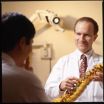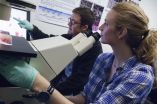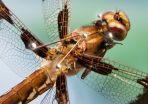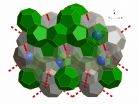(Press-News.org) Is it the thought that really counts?
When it comes to giving gift cards, maybe not.
New research from the University of Cincinnati can help even the most thoughtful gift giver avoid the mistake of over-personalization and keep that card from being banished to the bottom of a purse or hidden deep inside a wallet for the next six months.
"Givers often fail to anticipate that the gifts they prefer to give are not necessarily the ones recipients prefer to receive," says Mary Steffel, researcher and assistant professor of marketing in UC's Carl H. Lindner College of Business.
So before you make that specialty retailer rendezvous, remember these three tips, with further guidance from Steffel:
Don't overdo it with personalization. What you think is the "perfect" gift card might never get used.
"We find that givers tend to select gifts that are highly personalized to the recipient but that are less versatile than recipients prefer to receive. For example, a giver might personalize a gift card for a friend who loves sports by getting him a gift card for his favorite sporting goods store or a local sports venue. However, the sports lover might prefer a more general card, like a Visa- or Mastercard-backed gift card, as it would allow him to purchase sporting equipment, tickets to a sporting event or anything else that he might want or need.
"We further find that the tendency for givers to select overly specific gifts can contribute to gift nonuse. Recipients take longer to redeem gift cards that are specific to a particular store or product category than gift cards that can be used at more places and for a wider range of products. Givers, however, don't recognize this and overwhelmingly gravitate to more specific gift cards."
Really trying to impress that special someone? Think romantically, but shop for versatility.
"When it comes to choosing gifts for close others, like romantic partners, givers try especially hard to be thoughtful and demonstrate their knowledge of their partner. Ironically, these attempts to be thoughtful can backfire: we find that givers tend to choose more specific, less versatile gift cards when shopping for romantic partners than friends, but that recipients prefer more versatile gift cards regardless of how close they are to the giver."
Focus on what recipients would like, not what they are like. Consider their current wants and needs rather than their traits.
"Why do givers, who have been gift recipients at some point themselves, fail to realize what recipients actually want? It's a fundamental human tendency to focus on other people's stable traits and personality when trying to explain their behavior and preferences, but to focus more on situational factors when making sense of one's own behavior and preferences. Thus, when choosing gift cards, givers may focus on recipients' stable traits and choose gift cards that are tailored to those characteristics, whereas recipients focus on their variable wants and needs and prefer gifts with greater versatility.
"We find that encouraging givers to focus from what recipients would like rather than on what they are like makes givers more likely to choose the more versatile gifts than their recipients prefer."
About the Research
Steffel's research team presented "Giver-Recipient Discrepancies Contribute to Gift Card Non-Redemption: Givers Choose Personalized but More-Restrictive and Less-Preferred Gift Cards" at the Society for Judgment and Decision Making annual conference held Nov. 21-24 in Long Beach, California. The team also will present at the Society for Personality and Social Psychology annual conference to be held Feb. 26-28 in Long Beach.
The research features data analysis from multiple experiments where participants were asked to put themselves in the role of a giver or recipient and then choose between gift cards that varied in terms of specificity or versatility. Steffel and her team also incorporated real-world data from multiple gift card services, such as Giftly, into their research. The results showed a giver's preference for personalization often worked against him or her.
"Recipients took longer to redeem gift cards the more specific they were," Steffel says. "Givers didn't anticipate this. They thought it would take recipients equally long to redeem regardless of how specific they were."
Steffel and her co-authors Elanor F. Williams, an assistant research scientist at the Rady School of Management at the University of California, San Diego, and Robyn A. LeBoeuf, an associate professor of marketing at Olin Business School at Washington University in Saint Louis, plan to publish their research paper "Excessive Personalization in Gift Giving: Givers Choose Personalized but Less-Versatile and Less-Preferred Gifts." Further areas of study could involve other categories of gifts, such as cash, or the effect of gift card non-redemption on merchants.
INFORMATION:
Additional support for this research was provided by the Georgetown Institute for Consumer Research Consumer Insights Challenge in partnership with NPD Group.
Steffel had related research published in a spring issue of the Journal of Consumer Research.
CORVALLIS, Ore. - Researchers for the first time have developed a method to track through the human body the movement of polycyclic aromatic hydrocarbons, or PAHs, as extraordinarily tiny amounts of these potential carcinogens are biologically processed and eliminated.
PAHs, which are the product of the incomplete combustion of carbon, have been a part of everyday human life since cave dwellers first roasted meat on an open fire. More sophisticated forms of exposure now range from smoked cheese to automobile air pollution, cigarettes, a ham sandwich and public drinking ...
Many children who sustain so-called open bone fractures in the forearm or lower leg can, and do, heal safely without surgery, according to the results of a small study led by investigators at the Johns Hopkins Children's Center.
Open fractures occur when the broken bone protrudes through the skin, causing a puncture wound.
The study, published ahead of print in the Journal of Children's Orthopaedics, shows that when the wound is small -- less ½-inch in diameter -- and the surrounding tissue is free of visible contamination with dirt or debris, children heal well ...
CAMBRIDGE, MA, December 10, 2014 - A team of investigators from the Broad Institute, Massachusetts General Hospital and other leading biomedical research institutions has pinpointed rare mutations in a gene called APOA5 that increase a person's risk of having a heart attack early in life. These mutations disable the APOA5 gene and also raise the levels in the blood of triglyceride-rich lipoproteins, a type of fat. The researchers' findings, together with other recent genetic discoveries -- specifically, the identification of protective mutations in the APOC3 gene that lower ...
Stem cells in early embryos have unlimited potential; they can become any type of cell, and researchers hope to one day harness this rejuvenating power to heal disease and injury. To do so, they must, among other things, figure out how to reliably arrest stem cells in a Peter Pan-like state of indefinite youth and potential. It's clear the right environment can help accomplish this, acting as a sort of Neverland for stem cells. Only now are scientists beginning to understand how.
New collaborative research between scientists at Rockefeller University and Memorial ...
The dragonfly is a swift and efficient hunter. Once it spots its prey, it takes about half a second to swoop beneath an unsuspecting insect and snatch it from the air. Scientists at the Howard Hughes Medical Institute's Janelia Research Campus have used motion-capture techniques to track the details of that chase, and found that a dragonfly's movement is guided by internal models of its own body and the anticipated movement of its prey. Similar internal models are used to guide behavior in humans.
"This highlights the role that internal models play in letting these creatures ...
INDIANAPOLIS -- How do some proteins survive the extreme heat generated when they catalyze reactions that can happen as many as a million times per second? Work by researchers from Indiana University-Purdue University Indianapolis (IUPUI) and the University of California Berkeley published online on Dec. 10 in Nature provides an explosive answer to this important question.
Proteins are essential to the human body, doing the bulk of the work within cells. Proteins are large molecules responsible for the structure, function, and regulation of tissues and organs. Enzymes ...
CORVALLIS, Ore. - Nitrous oxide (N2O) is an important greenhouse gas that doesn't receive as much notoriety as carbon dioxide or methane, but a new study confirms that atmospheric levels of N2O rose significantly as the Earth came out of the last ice age and addresses the cause.
An international team of scientists analyzed air extracted from bubbles enclosed in ancient polar ice from Taylor Glacier in Antarctica, allowing for the reconstruction of the past atmospheric composition. The analysis documented a 30 percent increase in atmospheric nitrous oxide concentrations ...
In a ground-breaking paper published in Nature, they show that the three protein complexes act in relay to regulate cell division: reactivation of one leads to the second becoming active.
Cells rely on control systems to make sure that each aspect of the cell division cycle occurs in the correct order. Following successful segregation of the genomes in mitosis, each must return to its pre-division state in a process called mitotic exit. Mitotic exit is irreversible for all multicellular organisms. Loss of cell cycle control during this process - leading to unregulated ...
Clathrates are now known to store enormous quantities of methane and other gases in the permafrost as well as in vast sediment layers hundreds of metres deep at the bottom of the ocean floor. Their potential decomposition could therefore have significant consequences for our planet, making an improved understanding of their properties a key priority.
In a paper published in Nature this week, scientists from the University of Göttingen and the Institut Laue Langevin (ILL) report on the first empty clathrate of this type, consisting of a framework of water molecules ...
CAMBRIDGE, MA -- Using a gene-editing system originally developed to delete specific genes, MIT researchers have now shown that they can reliably turn on any gene of their choosing in living cells.
This new application for the CRISPR/Cas9 gene-editing system should allow scientists to more easily determine the function of individual genes, according to Feng Zhang, the W.M. Keck Career Development Professor in Biomedical Engineering in MIT's Departments of Brain and Cognitive Sciences and Biological Engineering, and a member of the Broad Institute and MIT's McGovern Institute ...






